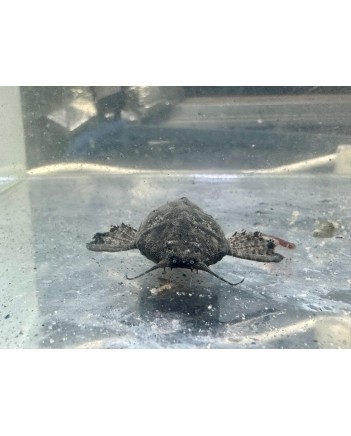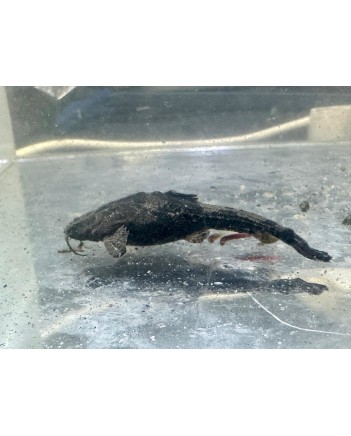Banjo Catfish
Scientific Name: Bunocephalus spp.
Common Names: Banjo Catfish, Guitarrita
Family: Aspredinidae
Origin: South America – Amazon, Orinoco, and Paraná river basins
Quick Overview
- Size:
4–6 inches (10–15 cm)
- Lifespan:
5–8 years (can live longer in optimal conditions)
- Temperament:
Peaceful, shy, nocturnal bottom-dweller
- Tank
Level: Bottom
- Diet:
Omnivore – accepts sinking pellets, frozen/live food (bloodworms, brine
shrimp), and detritus
Temperature & Ideal Living Conditions
Temperature Range:
- Tolerable:
72–79°F (22–26°C)
- Ideal:
75–77°F (24–25°C)
Water Parameters:
- pH:
6.0–7.0 (slightly acidic preferred)
- Hardness:
2–10 dGH (soft water best)
- Water
Flow: Low – mimic slow-moving rivers and creeks
- Tank
Size: 20 gallons minimum (long tanks preferred to maximize bottom
area)
Lighting:
- Dim
lighting recommended; prefers a shaded or subdued tank
- Use
floating plants to diffuse light
Substrate:
- Fine
sand or soft, smooth gravel – they love to burrow and stay partially
covered
- Avoid
rough substrates that could damage their skin
Decorations:
- Leaf
litter, driftwood, rocks, and caves create essential hiding spaces
- Mimic
natural blackwater conditions for optimal health and activity
- Tannins
(from leaves or Indian almond leaves) help replicate their wild habitat
Tank Mates
- Good
Companions: Peaceful species like small tetras, rasboras, corydoras,
and other calm bottom-dwellers
- Avoid:
Aggressive, fast, or overly active fish that may stress or outcompete the
Banjo Catfish
Behaviour & Personality
- Nocturnal – hides or buries itself during the day
- Extremely
peaceful and non-territorial
- Slow-moving
and rarely swims openly unless feeding or disturbed
- Low
bioload – great for community tanks with proper conditions
Breeding Info
- Rare
in home aquariums
- No
known consistent breeding techniques in captivity
- Spawning
may be triggered by rainy season simulations: lower temps and frequent
water changes
- Eggs
are laid in hidden spots and left to develop without parental care


